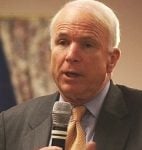Last month, clean technology leaders from China and California convened in San Francisco to discuss and launch a range of collaborations on energy and the environment.
It would be hard to think of a more urgent partnership. Accounting for 15% of the world’s energy consumption, China ranks second only to the US, but a projected doubling of consumption over the next decade will put China first. As a leader in clean technologies and environmental policy, California—with one-eighth of the US population and a sizeable chunk of its economy—has shown that economic growth and reducing energy consumption can go hand in hand.
Working relationships
Chinese experts are particularly eager to understand California’s achievements in energy efficiency. A recent project of the California-based China Energy Group, part of the US Department of Energy’s Lawrence Berkeley National Laboratory, shows that good design plays a crucial role.
“We decided to focus attention on the cement manufacturing industry since it's a huge emitter of CO2 and it's not particularly energy efficient,” said Mark Levine, the China Energy Group’s founder and director. Levine and his team of researchers believe that their program could slash emissions from China's cement industry, the world's largest, by more than half.
The project's centrepiece is a “benchmark tool” which Levine said “allows a cement manufacturer to benchmark his or her plant against best practice in China, best practice worldwide, and also to evaluate ways of improving the performance of the plant.” A second key component was that emissions could be slashed dramatically even before energy issues are addressed by replacing the calcium carbonate used in the manufacturing process.
After establishing a relationship with a key Chinese research and regulatory body—the China Building Materials Academy—Levine's group beta-tested their tool in China last month. “Our next job,” said Levine, “ is to get it widely used in the cement industry, which we think we can do, with a lot of help from the Chinese of course.”
Since the China Energy Group was created in 1988, Levine has collaborated closely with Zhou Dadi, then a young efficiency expert. Zhou’s since become an advisor on energy issues to premier Wen Jiabao and director of the China Energy Research Institute.
As part of the Chinese delegation in San Francisco last month, Zhou outlined his “personal goals” for China's energy use: a 20% decrease in energy intensity from 2005 to 2010; a leading global position on energy efficiency between 2020 and 2030; and a peaking of carbon emissions by 2030. It was Zhou’s influence at the China Energy Research Institute and close ties with premier Wen that helped turn the first of these goals into official policy. If Zhou’s personal goals and high standing are any indication, policymakers in Beijing will be moving more and more aggressively on energy and climate issues.
“We have to do a lot of things on system change,” Zhou said. “The real challenge is in improving building, urban planning, the industrial sector…. We need very good design intelligence.” Zhou also has a strongly-held view that managing Chinese consumption is a major part of the equation—he outlined the importance of “not only personal choice, but social choice” and getting Chinese people to “really understand by study and by scientific analysis that we need another kind of pattern.”
When the green energy conference re-convenes in Shanghai and Beijing this November, its Californian and Chinese organisers expect that a series of distinct projects will emerge. According to Levine, sessions will be “organised into three different areas—Business and Venture Capital, Policy, and Education—and we expect initiatives out of each of these areas, and we even expect initiatives out of the subgroups.”
California’s political will
China’s energy experts are currently partnering with a range of actors from the policy, scientific, and business communities in California with the goal of tackling issues from traffic congestion to solar power to utility regulation. This year’s conferences in San Francisco and Beijing aim to expand these existing partnerships and stimulate new ones.
Frustration with federal inactivity on climate issues has been one motivating factor for Californians to engage their Chinese counterparts. Another is in the very air that Californians breathe, which increasingly bears traces of Chinese pollution wafted over the Pacific. The state has carefully positioned itself as a leader in technological innovation and environmental policy—and boasts an influential and large-scale clean-tech industry.
In 2005, California's governor Arnold Schwarzenegger raised climate and energy concerns during a visit to Beijing. A few months earlier, leaders of California's powerful Public Utilities Commission and Energy Commission, along with the utility Pacific Gas and Electric, had signed a pact with Jiangsu province and an informal agreement with Shanghai's city government to provide training to Chinese regulators and utility companies.
Schwarzenegger remarked that the California-Jiangsu deal could be “the model of US-China energy cooperation in the future”, and Jiangsu has itself been hailed as a model within China by the National Development and Reform Commission.
Some of the lessons from California's experience with energy efficiency could prove beneficial to China, such as the importance of building and appliance standards; a mechanism for making utilities' profitability independent of high energy use, called “decoupling”; and other demand-side management techniques. These tools and others have kept California's per capita energy consumption flat, as that figure has risen across the US over the past 30 years.
Jiang Lin, head of the China Sustainable Energy Program at the Energy Foundation, also highlighted California's broader contributions, including the “development of clean energy policies” and “building local capacity and institutions in China” to implement those policies.
Stepping up
The steps taken by the governor's office create a favorable political climate and carry symbolic significance, but most clean energy alliances involving China and California are the work of NGOs, companies and universities on both sides. If Silicon Valley businesses see big profits in greening China, many of the California-based NGOs and universities are looking for opportunities to expand their international presence. As Levine commented, it can actually be an advantage for his group and others to get away from official memoranda of understanding and down to business: “it's a huge advantage to be dealing with the Chinese government on an informal basis, so we can get things done.”
One such NGO, the new US-China Green Energy Council, was formed this year, with the initial goal of sponsoring and organising the April conference in San Francisco, in co-operation with the Asia Society. One of the council's longer-term aims is to spur investment from California in clean-tech business initiatives in China. According to the Cleantech Group, an organisation that tracks and encourages clean-tech investments, investment in North American clean-tech businesses rose 38% in 2007 to $3.9 billion—nearly half of it to California. So far, Silicon Valley venture capitalists have invested comparatively little in China's clean-tech boom, but Valley insiders indicate they’re starting to gear up.
More academically minded are the efforts of the China Center for Energy and Transportation, based at the University of California at Davis. Aiming to share “Californian experiences” and “new ideas”, the center at Davis has already facilitated exchange between Chinese and Californian researchers on topics such as the potential for car-sharing and hydrogen refueling stations in China.
In another effort, environmental design experts at the University of California, Berkeley, led by professor Harrison Fraker, are working with the Qingdao city government and the Ministry of Construction on “an alternative to the typical superblocks” where most city-dwellers currently live. Fraker said that a collaboration will also begin this year with the architecture program at Shanghai's Tongji University on promoting “transit-oriented development” in China “with a whole systems approach.”
Larger-scale academic exchanges are in the works as well. A proposed “10+10 Program” would formalise and grow academic exchanges between the ten campuses within the University of California (UC) system and 10 universities in China. Research themes around clean energy, climate research, and transportation issues “are definitely important” and will play a role, according to Gretchen Kalonji, the UC system's director of International Strategy Development who is spearheading the effort.
In the non-profit sector, the San Francisco-based Energy Foundation manages the China Sustainable Energy Program, channelling foundation dollars from the US into work on sustainable transportation, renewable energy, green building, and electric utilities initiatives in China. Its director, Jiang Lin, said that the foundation awarded over US$18 million in 2007 alone to “most of China’s leading think-tanks and universities in energy research” and to the “best international energy policy experts around the world.”
Obstacles
The Energy Foundation was set up to address one of the major constraints on the growth of China-California exchanges: money. Implementation is another commonly cited constraint. According to professor Fraker, top-level political will is strong on the Chinese side, but it's “the mid-level bureaucrats [who] are going to be held responsible for making it all work… and they're very risk-averse.”
Energy Foundation’s Jiang Lin pointed to a “lack of skilled technical and policy professionals who can understand policy landscapes in China and California” as a limitation that affects both sides. Levine agreed, citing barriers familiar from other collaborations: “our knowledge of each other, and the technical capabilities that exist on both sides and the ability to figure out how they fit together.”
California's venture capitalists and clean-tech businesses face their own set of challenges in working closely with Chinese counterparts. Scott Sandel, at the Silicon Valley venture firm New Enterprise Associates, echoed a common concern about investing in clean-tech companies whose intellectual property is held in China, where it may not be well protected.
In any case, California may not hold all the answers when it comes to energy consumption. Levine commented that “the whole transportation and land-use planning area” is one where China will have to learn on its own or from other places, avoiding California's pattern of sprawling suburbs based on private automobiles. California's relative lack of heavy industry and generally moderate climate are other factors that may dictate different energy solutions.
Despite such difficulties, the range and impact of the clean energy partnerships between China and California continue to grow. Organisers of next November's clean energy conference in Beijing hope to enhance these efforts with concrete steps in the form of business deals, policy initiatives, and exchange programs. While the immediate prospects remain dim for a much-needed Washington-Beijing joint effort on climate and energy, California and its Chinese partners are moving forward.
Over to you: do you think California is a good model for China on energy issues? Are there better models for China to follow?
Ross Perlin received his master's degree at London's School of Oriental and African Studies, focusing on the documentation and description of endangered languages.
Homepage photo by kevindooley



